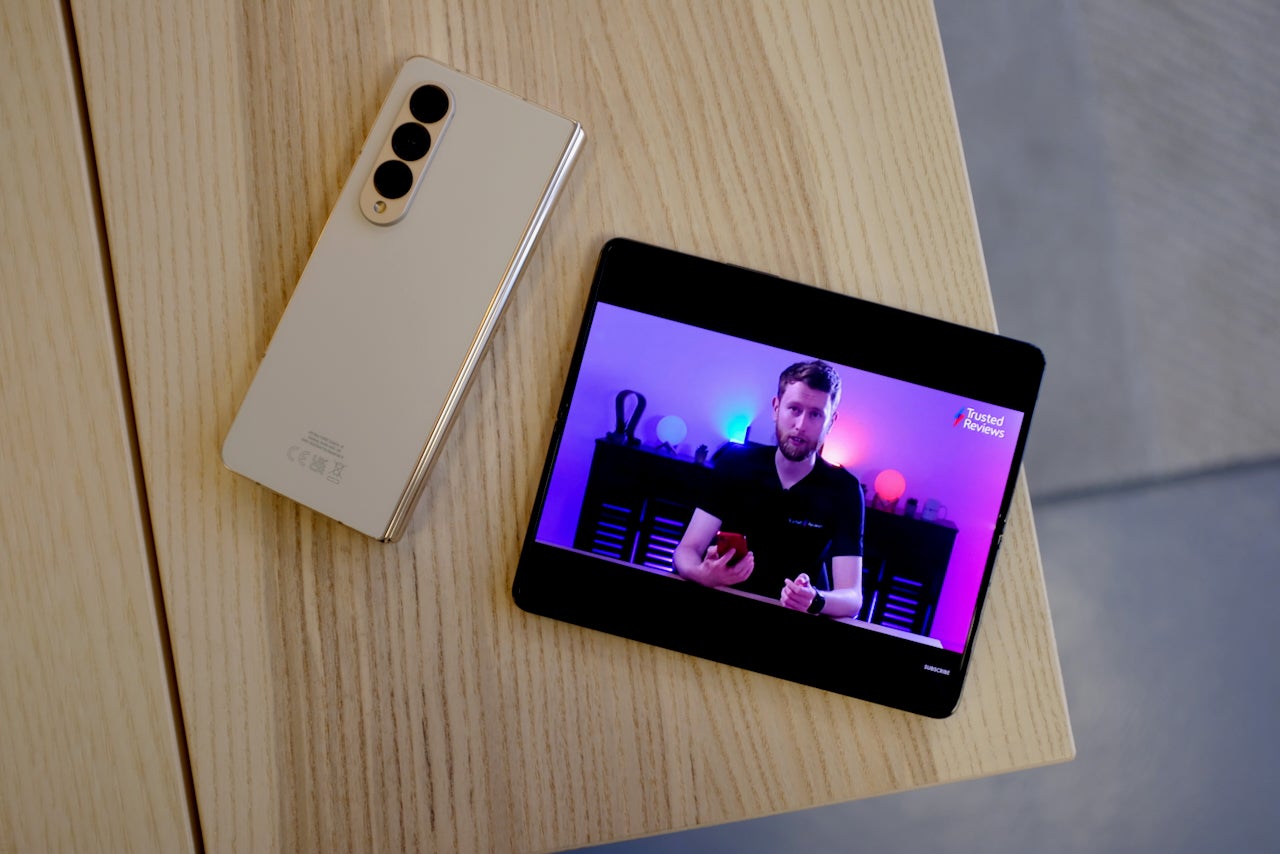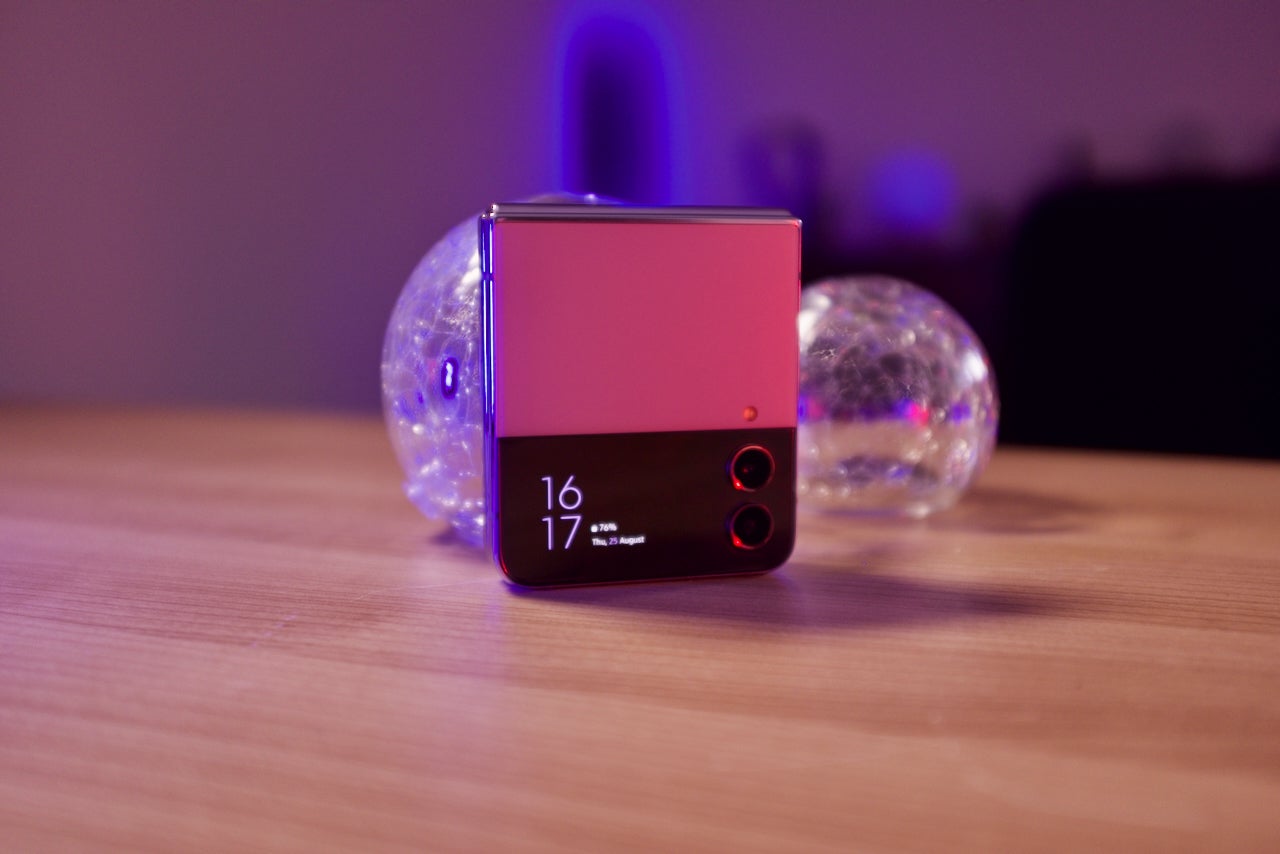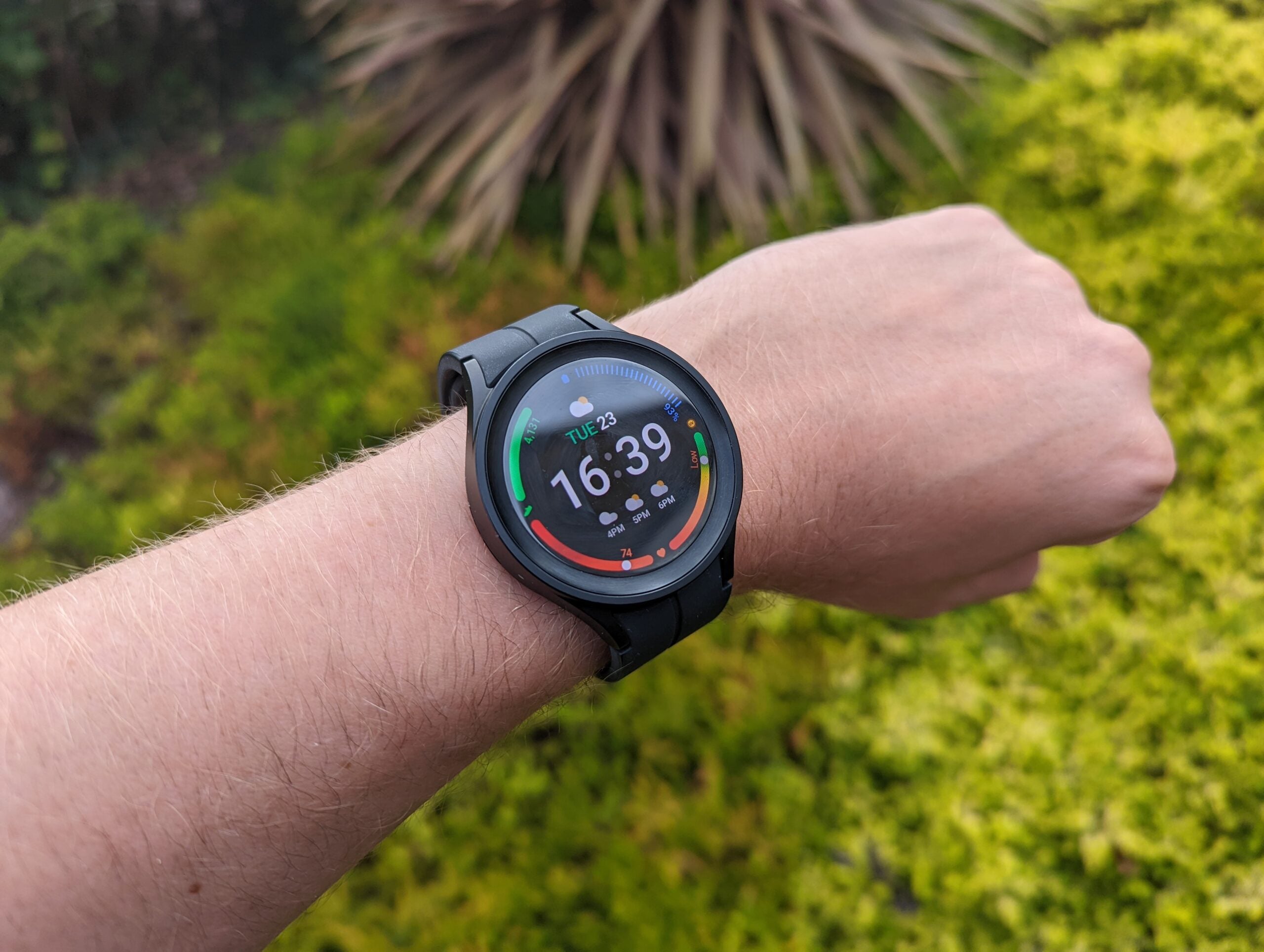Samsung Galaxy Watch 5 Review
A solid wearable but a disappointing update
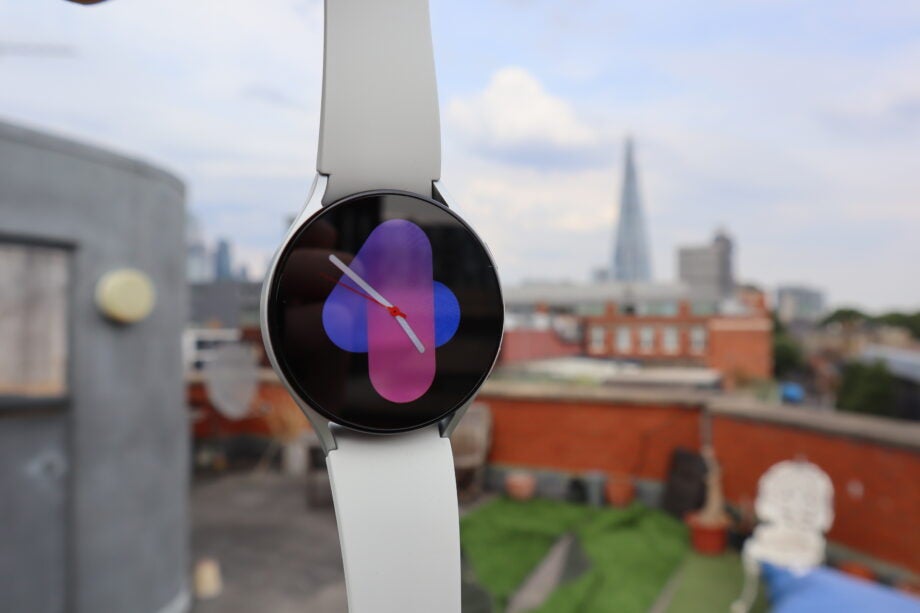

Verdict
The Galaxy Watch 5 is an incredible wearable when weighed up against its competitors. However, as a successor to the Galaxy Watch 4, it’s a huge letdown. The upgrades are few and far between, and there certainly isn’t enough on offer here to warrant trading in last year’s model. Nevertheless, if you have an old Wear OS 2 watch that you’re looking to replace, then you won’t find a better wearable for the Android crowd than the Galaxy Watch 5.
Pros
- The best example of Wear OS 3
- New and improved sleep tracking
- Solid battery life for a Wear OS device
- Accurate HRM results
Cons
- Barely any different to the Galaxy Watch 4
- Temperature sensor is an afterthought
- The workout selection needs improving
Availability
- UKRRP: £269
- USARRP: $279.99
- EuropeRRP: €299
- CanadaRRP: CA$349.99
- AustraliaRRP: AU$499
Key Features
- Two sizesWatch 5 comes in both 40mm and 44mm sizes
- Quicker charging and bigger batteryA jump from 361mAh to 410mAh
- New Sapphire crystal displayUp to 1.6x tougher than last year
Introduction
Samsung is back with its second Wear OS 3-powered smartwatch in the Galaxy Watch 5 – but is there enough here to warrant an upgrade?
As far as wearables are concerned, 2021 was a mixed bag. The market did see a new smartwatch that not only saw two major companies partner up (Samsung and Google), but it also signalled what could be on the horizon for the industry as a whole. The Galaxy Watch 4 was that device, and being one of only a handful of watches that actually carries Wear OS 3 (even at the time of this review), it remains an excellent smartwatch that’s easy to recommend.
Samsung could have sat on the success of the Watch 4 for another season, with the intention of releasing a successor further down the line – but when was the last time you saw a tech industry titan forego an annual update? Enter the Galaxy Watch 5, and while it’s a solid device in its own right, it’s a pitiful upgrade that applies only the most minor of changes to the foundations of the Watch 4.
Design and Screen
- The design is identical to the Galaxy Watch 4
- A new, tougher Sapphire crystal display
- The screen is easy to read outdoors
Unless you’re a diehard fan of the Galaxy Watch 4, you’d be forgiven for thinking that its successor bears an identical design – and for the most part, you’d be right. Samsung has definitely gone with the “if it ain’t broke, don’t fix it” approach, and the only giveaway that you’re looking at a Galaxy Watch 5 is the updated collection of colour options in which the device is available.
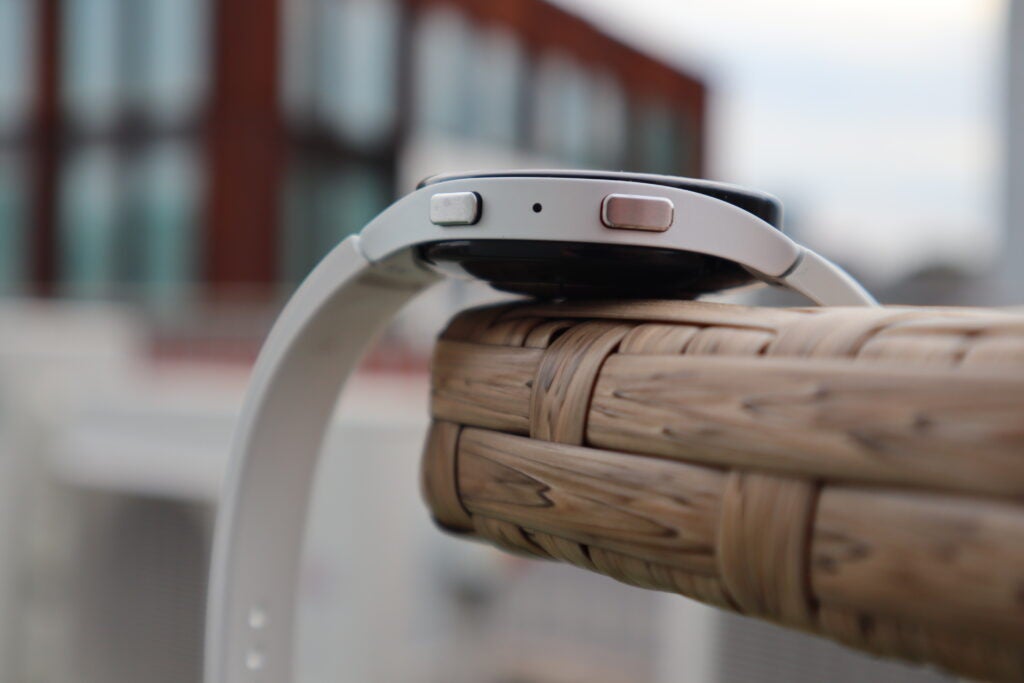
Silver and Pink Gold make a return, but they’re now accompanied by Graphite and Sapphire. Being honest, the Graphite option doesn’t look all too different to last year’s Black version; but the Sapphire watch does arrive in a light-blue tint that looks super-stylish on the wrist.
The surface area on the underside of the watch has also been expanded slightly to achieve better contact with your wrist; helpful for analysing stats such as your heart rate or blood oxygen levels more accurately. But there’s one major change that’s hiding in plain sight – a Sapphire crystal display, which Samsung claims is 1.6x tougher than the previous panel.
Of course, it’s tricky to put a claim like that to the test without throwing both watches from a fair height. Nevertheless, it’s reassuring to know that the Galaxy Watch 5 can take more of a beating than usual. Strangely enough, it features the same MIL-STD-810H military durability and IP68 rating as the more expensive – and outdoor-focused – Galaxy Watch 5 Pro.
For those hoping for more of a design overhaul, I’m sorry to say that’s the extent of the changes made. I was a huge fan of the minimalist design of the Watch 4, so I’m not too fussed about it making a reappearance – and, let’s face it, Apple has stuck with the same watch design for far longer than Samsung could be accused of doing.
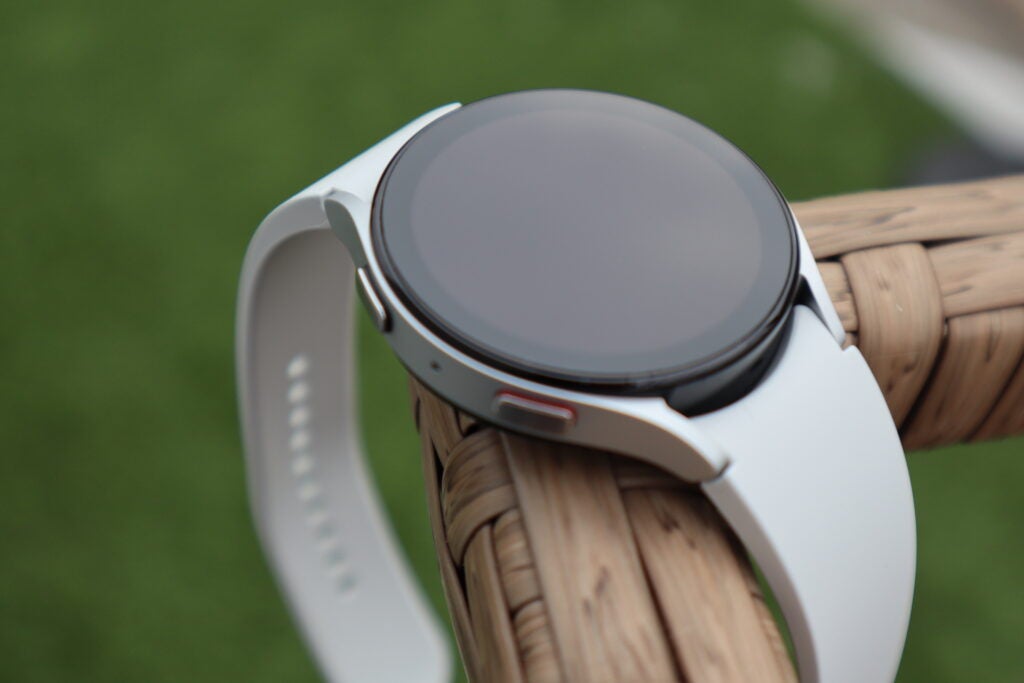
Just like last year, the display is super-bright and very easy to read outdoors. In fact, it remains my favourite smartwatch display to date since it really does bring the onboard watch faces to life – which is handy considering a few more have been added to the mix.
Features and Performance
- Greatly improved sleep tracking
- Temperature sensor goes unused
- Very few updates
While I’ve generally been quite forgiving in terms of Samsung sticking with the same external design, this is less so the case when it comes to the company shipping an almost-identical product for features.
You might have picked up on the dearth of features for yourself during Samsung’s official announcement of the Watch 5, which was noticeably lacking in comparison to the company’s other products. For example, it was unveiled that the Watch 5 would have a new temperature sensor built-in, a feature that’s been added to the Fitbit Sense to warn users if their body is showing signs of an upcoming fever.
Having that tech on the Watch 5 appears great on paper, particularly since wearable health tracking continues to move in the direction of a more holistic approach. However, at present, the sensor is nothing more than a gimmick on the spec sheet. In that same unveiling, Samsung mentioned that the sensor would improve overall accuracy of the watch’s tracking features, but that it would be working with developers to find practical uses for the technology going forward.
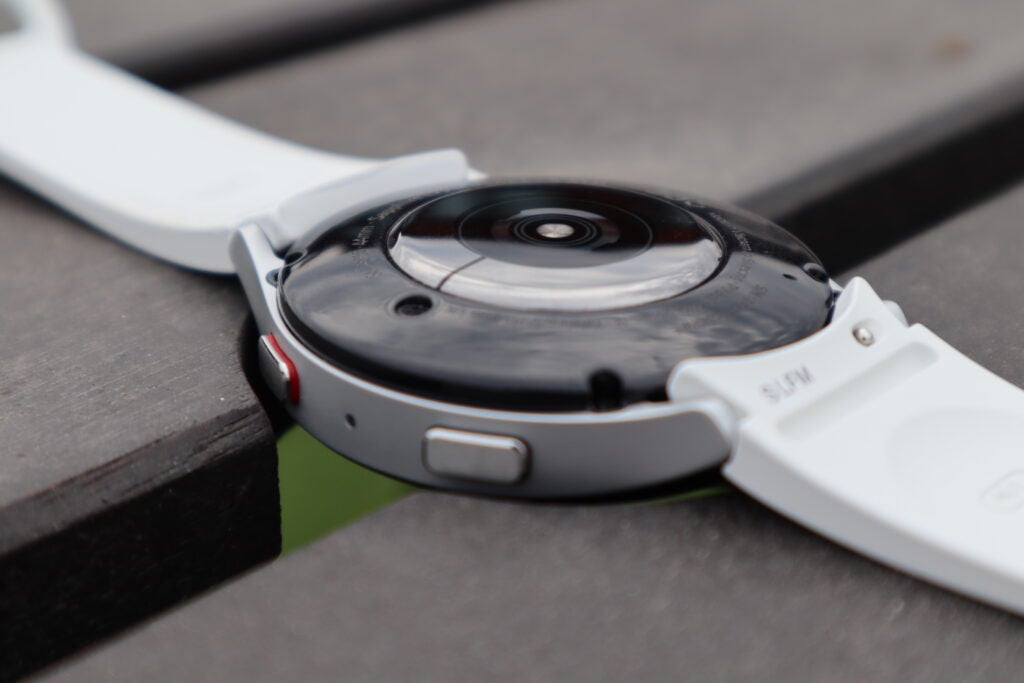
What this means, at the time of this review, is that the temperature sensor largely serves no purpose. My skin temperature hasn’t been added to the metrics picked up by the Watch 5’s BioActive scan, nor has it found its way into the Samsung Health app. The fact that Fitbit found a way to make this technology work two years ago just makes the whole thing feel like a complete embarrassment for Samsung.
So, the only thing that can be pointed at as a notable addition to the Watch 5’s features is the new collection of watch faces. I gave Samsung credit last year for being the only company, aside from Apple, that values the importance of a watch face to the wearer – understanding how it contributes to a person’s sense of style.
The new Gradient Number watch face has featured prevalently in the Watch 5’s advertising, alongside the updated Kinetic Digits face and, to their credit, both look fantastic – drawing on a sense of minimalism to highlight their use of colour. Meanwhile, the Flower Garden revels in colour and movement to make it feel as if its various plants and leaves operate just like the cogs inside a traditional timepiece.
Again, the bright display really helps to sell the visual style of these watch faces, and there’s plenty of customisation on offer for adding complications and even tweaking the colour of the dials. They make an already great collection even better – with the exception of the AR Emoji watch face, which I can firmly say isn’t my cup of tea (and I’d be surprised if it was anyone else’s, either).
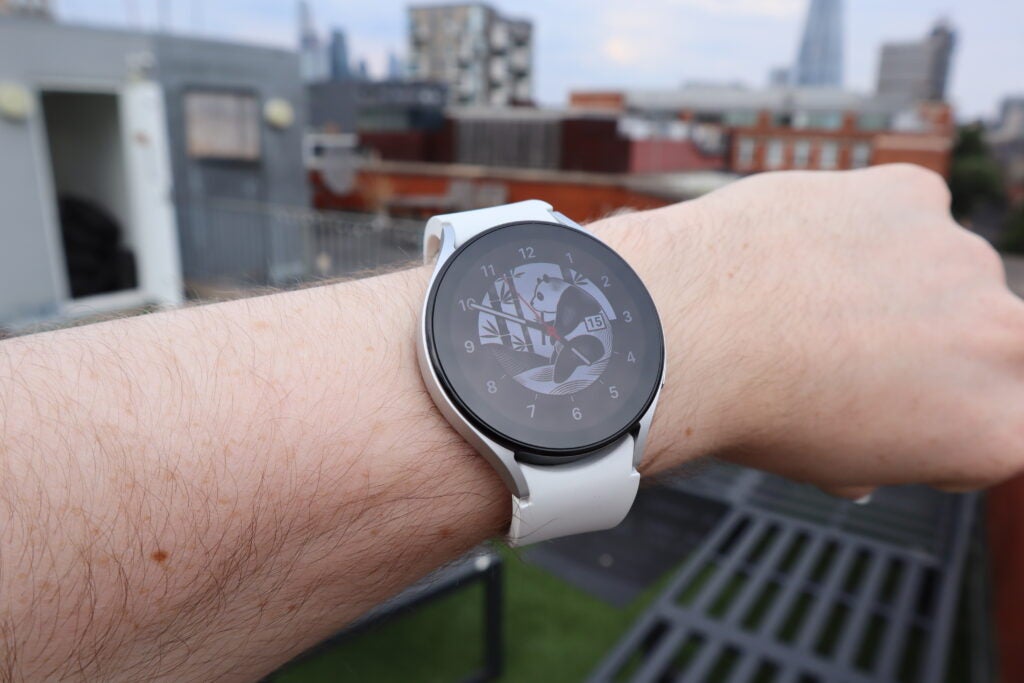
The Galaxy Watch 4 was the first watch anywhere to launch with the Wear OS 3 platform. It was a big deal, not only because it felt great to use, but also since it offered up a much brighter future than Wear OS 2 – or so we thought. Thanks to the slow rollout of Wear OS 3 – hindered by the fact that we’re still waiting on Google’s own Pixel Watch to arrive – the hype has died down, and it’s here that the Galaxy Watch 5 finds itself in a pickle.
On the one hand Wear OS 3 is still great in use, and there have been a few additions to the software since the Watch 4. For example, Google Assistant is finally available as an onboard voice assistant and it works really well, with only the odd hiccup here and there. Samsung has also expanded its sleep-tracking software to use colourful animals to represent the sleeping patterns of its users – a cute and cuddly way of breaking down complex sleep data.
Until now, I’ve always felt that Huawei has had the upper hand when it comes to sleep tracking, thanks to its fantastic TruSleep software, but Samsung has genuinely surprised me here by stepping up its game. On top of receiving a designated sleep animal (Unconcerned Lion for yours truly), the Health app sets you up with a four-week course to teach you about the intricacies of a good night’s sleep, and how you can make meaningful changes to improve your circadian rhythm.
It’s really impressive tech that ensures I’ll be wearing the Galaxy Watch 5 long after writing this review – or at least until I can get my sleeping pattern how it should be.
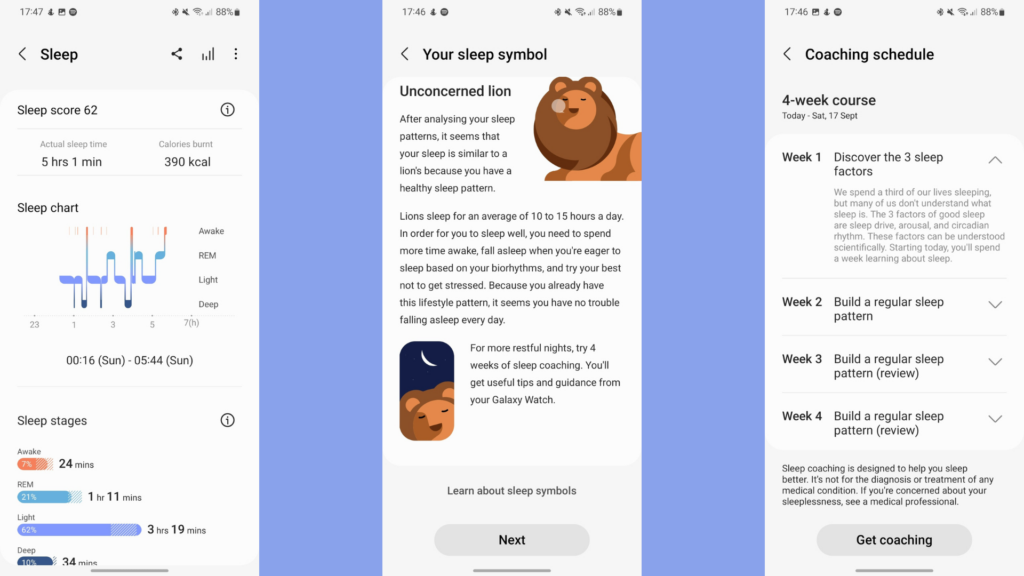
However, aside from that, the experience here has been largely the same as that I enjoyed roughly a year ago with the Galaxy Watch 4. With even last year’s chipset making a return, there are no speed improvements to be found when using the software.
Again, this brings us back to the question over whether the Galaxy Watch 5 is worth the upgrade, particularly when it’s slightly more expensive than the Watch 4 at launch, plus its predecessor can now be found with a significant price reduction in some places.
Fitness Tracking
- Samsung Health is accessible and easy to use
- Accurate HRM readings on the Watch
- Odd collection of workouts
Those who have used the Samsung Health app, or have had experience with their own Galaxy Watch, will know that Samsung takes more than a few cues from Apple in the fitness tracking department. For starters, the Health app itself follows a simple and clean aesthetic, much like Apple’s Fitness app, preventing the user from becoming bogged down in statistics from the get-go.
The daily activity tracker also looks suspiciously similar to Apple’s Rings – offering up your step count, activity time and the number of calories you’ve burned. It just escapes being a carbon copy by presenting itself in the diagram of a heart to stay on topic.
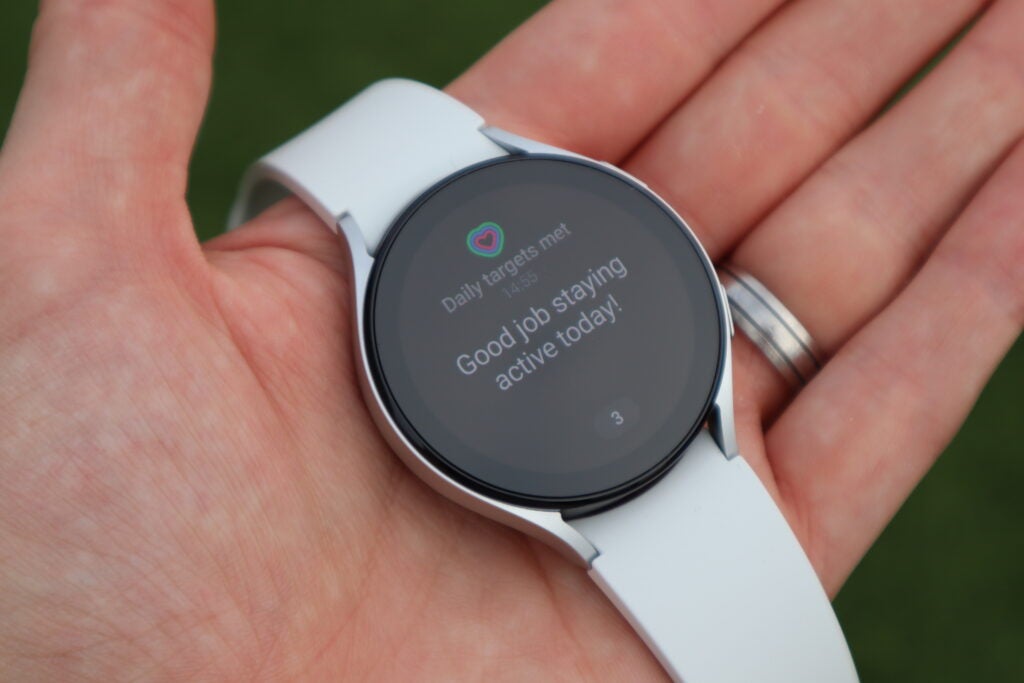
While this might be a tad unoriginal on Samsung’s part, I don’t have a problem with it because I’ve found it easy to wrap your head around. If you’re just getting started on your fitness journey, or you simply want a more detailed insight into your current efforts at the gym, you’ll be fine here. It’s no Garmin, but that’s targeting a very different end of the market (which Samsung is now tapping into with the Galaxy Watch 5 Pro).
However, what props all of this up is a lot of smaller victories that could be taken for granted, but that amount to an excellent overall experience. For example, Samsung’s movement reminders don’t just spur you on to get out of your chair, they also offer stretches on-screen that you can do while seated to stay limber.
In addition, auto-tracking works really well; it picked up on my lunchtime walk very quickly, and recognised that I’d finished once I’d sat back down at my desk. The heart rate tracker also delivers some impressively accurate results.
A nearly hour-long stint on a cycling machine saw an average heart rate of 173 BPM and an average of 136 BPM. This was a near match for the 172 BPM high and 136 BPM average picked up by an accompanying Myzone MZ-Switch heart rate monitor.
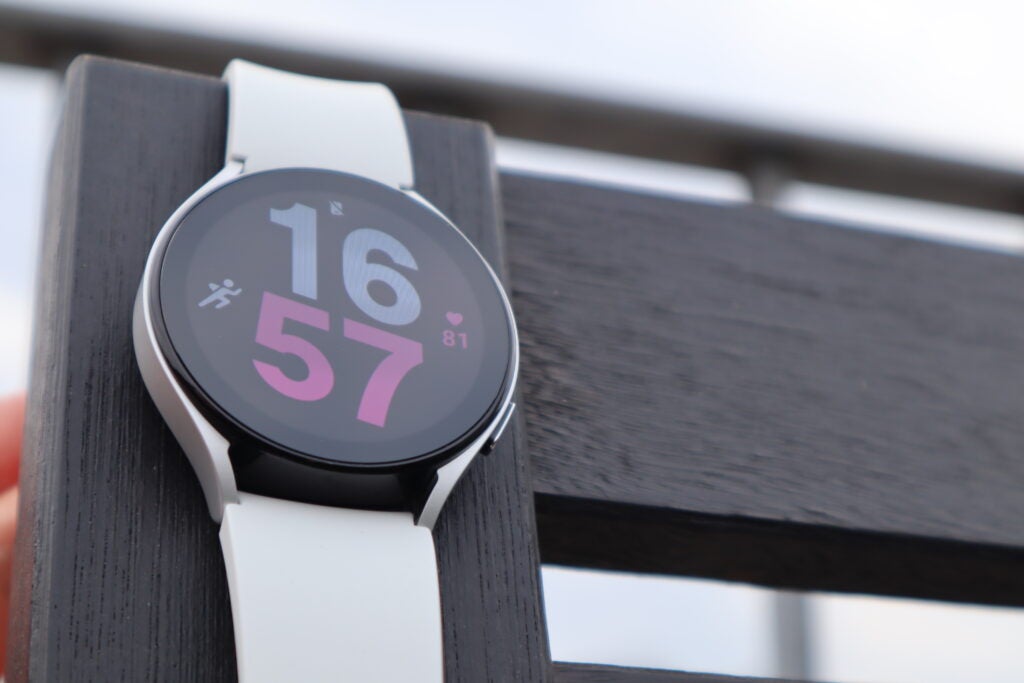
Of course, Samsung’s BioActive sensor makes a return here, which compiles a solid (and similarly accurate) look at your overall health, with statistics including your weight, skeletal muscle and BMI. It works just as well as it did through last year’s model, but the experience is unchanged otherwise.
GPS tracking isn’t quite as impressive – connecting in about 16 seconds from the point of activation. This isn’t terrible, but nowhere near as fast as the Coros Vertix 2, for example. Luckily, route tracking was fairly smooth – although, according to the watch, I did morph into a few buildings during a walk through central London.
One gripe that I do have – one that would be easy for Samsung to fix – is the type of workouts available to track. If I’m headed to the gym for a weightlifting session then I prefer having that as the dedicated workout; but the Galaxy Watch 5 has split weightlifting into a bunch of different exercises.
For example, you can track arm curls and deadlifts separately, but if you’re incorporating them as part of one workout then you don’t have a holistic option that covers it all. I highly doubt that anyone can be bothered to constantly swap between tracked workouts on the watch (I know I can’t).
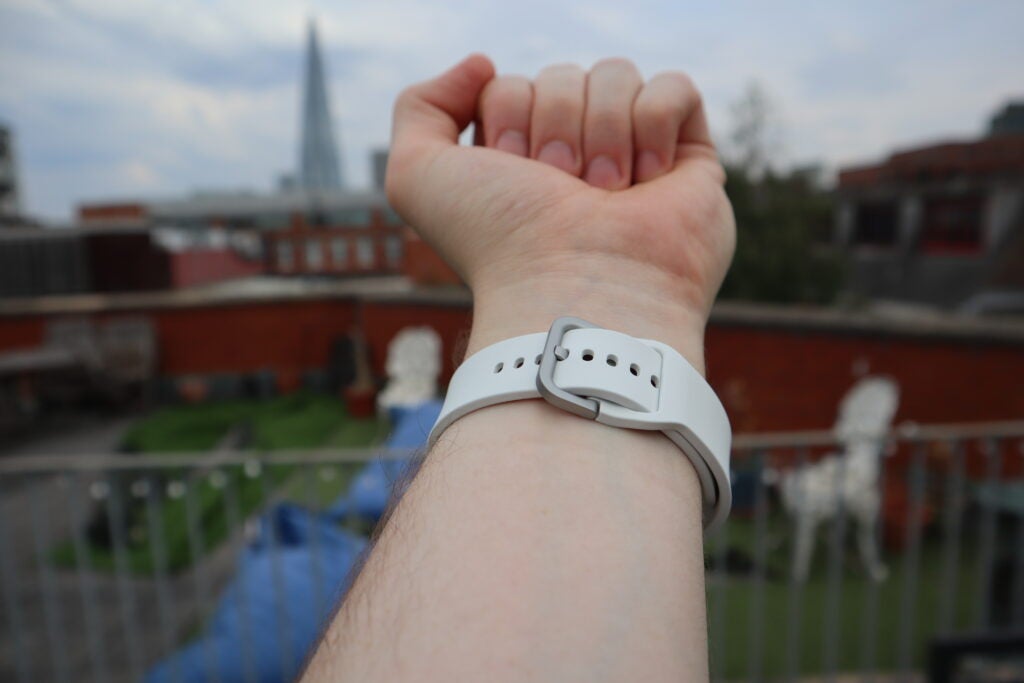
Battery Life
- Jump from 361mAh to 410mAh
- Nearly 48 hours of use on a single charge
- A 30-minute charge delivers a 52% top-up
In lieu of any major new features, Samsung has done the one thing that will always make smartwatch users turn their head: improve the battery life. Building upon last year’s capacity, the Galaxy Watch 5 boosts capacity from 361mAh to 410mAh – which, coming from an Apple Watch SE that requires a daily charge, is certainly a welcome upgrade.
Luckily, those specs translate to some noticeable differences in everyday use. With an always-on display, a tracked 70-minute workout with automated tracking of walking throughout the day, I was able to get through almost 30-hours of use before the watch dropped to 15% from a full charge. That in itself is respectable, particularly considering the rivals the Galaxy Watch 5 is going up against. But it’s with the always-on display disabled that the Watch 5’s battery really shows its skill.
In this instance, I was able to get through a near 47-hour 20-minute stint before the battery dropped to 5%, requiring a top-up. Given that this test involved multiple tracked workouts, including one 30-minute walk with GPS enabled, that’s a seriously impressive result against the 18-hour battery life of the Apple Watch 7.
Charging fared similarly well: I was able to get from 15% to a full battery in 1hr 20mins. Samsung itself claims that you can jump from a dead battery to 45% in 30 minutes, but in my test, the company seemed to be selling itself short. I managed to get to 52% over the same time period – which, if you need a quick top-up in the morning, is a huge boon.
Latest deals
Should you buy it?
You want the absolute best Wear OS 3 watch: The competition is sparse and with the excellent foundations of its predecessor, the Galaxy Watch 5 manages to be the best Wear OS 3-powered device on the market.
You already have the Galaxy Watch 4: While the Galaxy Watch 5 is a great wearable in its own right, it’s barely an upgrade over its predecessor. If you already have the Galaxy Watch 4 then there really isn’t any reason to get the latest tech.
Final Thoughts
Even though it currently leads the way in terms of wearable devices outside the realm of the Apple Watch, Samsung has missed a trick with the Galaxy Watch 5. Instead of adding a generous set of updates to help it compete against the upcoming Pixel Watch, the company has instead released a near carbon-copy of the Galaxy Watch 4, with only a few minor changes to write home about.
With that said, the Galaxy Watch 5 remains an excellent smartwatch run on terrific software, with a stylish build and a solid battery life for a premium wearable. If you’re coming up from an old Wear OS 2 watch then it’s easily a worthy upgrade, but if you picked up last year’s Galaxy Watch 4 then I see absolutely no reason that you should trade it in. My advice to you would be to hold off until the Galaxy Watch 6 arrives – or, at the very least, wait just a few more months to see what Google ends up offering with its first mainline wearable.
How we test
We thoroughly test every smartwatch we review. We use industry standard testing to compare features properly and we use the watch as our main device over the review period. We’ll always tell you what we find and we never, ever, accept money to review a product.
Worn as our main smartwatch during the testing period
Heart rate data compared against dedicated heart rate devices
Side-by-side GPS comparison with our best scoring smartwatches
FAQs
No, the Galaxy Watch 5 only works with Android phones.
Yes, Google Assistant is now available to download for the Galaxy Watch 5.
The Galaxy Watch 5 is waterproof up to 5ATM, with an IP68 rating.
Trusted Reviews test data
Full specs
Sustainability
TrustedReviews’ holds the fact that global warming is not a myth as a core value and will continuously endeavor to help protect our planet from harm in its business practices.
As part of this mission, whenever we review a product we send the company a series of questions to help us gauge and make transparent the impact the device has on the environment.
We currently haven’t received answers to the questions on this product, but will update this page the moment we do. You can see a detailed breakdown of the questions we ask and why in our sustainability info page.

